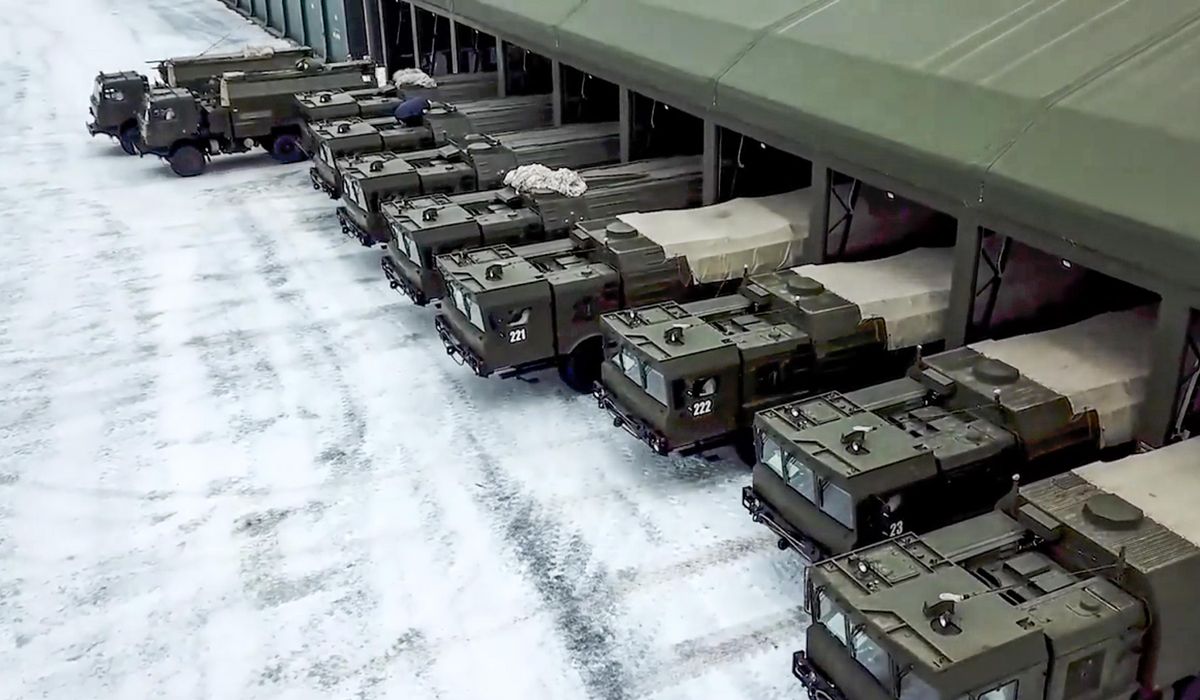The nation will soon face two states with nuclear power equal to that of the United States, the report by the Congressional Commission on the Nuclear Posture of the United States said, at a time when the risk of a conflict with Moscow and Beijing is increasing.
“It is an existential challenge for which the United States is ill-prepared, unless its leaders make decisions now to adjust the U.S. strategic posture,” the 160-page survey released Thursday warned.
While the current U.S. nuclear posture is strong, “it is ill-prepared for the potentially existential challenges of 2027-2035 and beyond,” the report said.
The report was based on a year-long study that included intelligence briefings on the dangers posed by China and Russia, the expansion and modernization of their nuclear forces and the development of new strategic arms.
The 12-member bipartisan commission was chaired by Madelyn R. Creedon, former Energy Department deputy administrator of the National Nuclear Security Administration during the Obama administration. Former Sen. Jon Kyl, Arizona Republican, and a leading advocate for strengthening U.S. nuclear forces, was the vice chair.
The findings are a setback for the Biden administration, which has stated that it wants to reduce the role of nuclear weapons in U.S. strategy.
House Armed Services Committee Chairman Rep. Mike Rogers, Alabama Republican, praised the report, saying it “detailed the gravity of the situation we face and emphasized that the current trajectory of the U.S. nuclear deterrent is insufficient to deter the looming Chinese and Russian threat.”
Mississippi Sen. Roger F. Wicker, ranking Republican on the Senate Armed Services Committee, said the report provided a clear-eyed assessment of the problem and urged Congress to move quickly to restore deterrent capabilities.
“China expands”
China is engaged in what the report called an unprecedented expansion of its nuclear arsenal that soon will rival that of the United States. Russia also continues to pose nuclear threats.
Based on the growing danger of nuclear war, the commission unanimously called for urgent national focus and action beyond the multi-billion-dollar strategic nuclear modernization program now in place.
“In sum, we find that the United States lacks a comprehensive strategy to address the looming two-nuclear-peer threat environment and lacks the force structure such a strategy will require,” the report said.
The commission also called for strengthening conventional military forces to deter Russia in Europe and China in Asia.
The new strategy must take into account the prospect that Moscow and Beijing will conduct joint aggression and that China’s nuclear forces should no longer be regarded as a lesser threat. The panel called for urgently completing the current nuclear modernization that will replace all U.S. delivery systems — missiles, bombers, and missile-firing submarines.
China’s stunning nuclear surge was not factored in the current U.S. nuclear modernization program, the report said. In addition to expanding its long-range missiles, Beijing also has deployed and is building new intercontinental systems, including hypersonic missiles and a space-transiting “fractional or multiple orbital bombardment systems” that the report said “could potentially threaten an unwarned preemptive attack on the United States.”
China’s military also has low-yield nuclear forces that could be used to attack American military forces.
U.S. analysts now estimate that Beijing’s warhead stockpile surpassed 400 in 2021 and will reach over 700 by 2027 and over 1,000 by 2030. The current pace means the warhead stockpile will be at least 1,500 warheads by 2035, the report said. Russia’s nuclear forces are currently the largest of any nation and will likely remain so through 2035, the report said.
The Russian nuclear expansion includes a new SS-X-29 Sarmat long-range missile, new Dolgorukiy-class ballistic missile submarines armed with the new SS-N-32 Bulava missile, and Severodvinsk-class nuclear-powered cruise missile submarines. Moscow also is deploying nuclear-capable hypersonic missiles, including the Avangard hypersonic glide vehicle, the Tsirkon land-attack cruise missile, and the Kinzhal air-launched ballistic missile. The Kinzhal was used in the Ukraine invasion with conventional warheads.
Russia also has “continued development of long-range nuclear-capable nuclear-powered missile and underwater delivery systems, such as Status 6 (also known as Poseidon), that are meant to penetrate or bypass U.S. defenses,” the report said.
Nuclear threats from North Korea and potential in the future from Iran also will strain U.S. deterrence, the report said.
The U.S. nuclear modernization included building new Sentinel ground-based missiles, new Columbia-class missile submarines, and new bombers, including the B-21. Current forces include systems first deployed between 1970 and 1988 that must be upgraded. Current warheads were built between 1979 and 1989 and need modernization.
To bolster deterrence, the commission urged the military to prepare to add some or all the warheads currently held in reserve and to deploy the new Sentinel missile with multiple warheads.
Commission members included retired Air Force Gen. John Hyten, a former vice chairman of the Joint Chiefs of Staff and former commander of the Strategic Command; Marshall S. Billingslea, a former special presidential envoy for arms control at the State Department; Lisa Gordon-Hagerty, a former NNSA administrator; Rose Gottemoeller, a former State Department arms control official; Rebeccah L. Heinrichs, an adviser to the Strategic Command; Matthew Kroenig, a former defense and intelligence official; and Franklin Miller, a former Pentagon and White House official.








